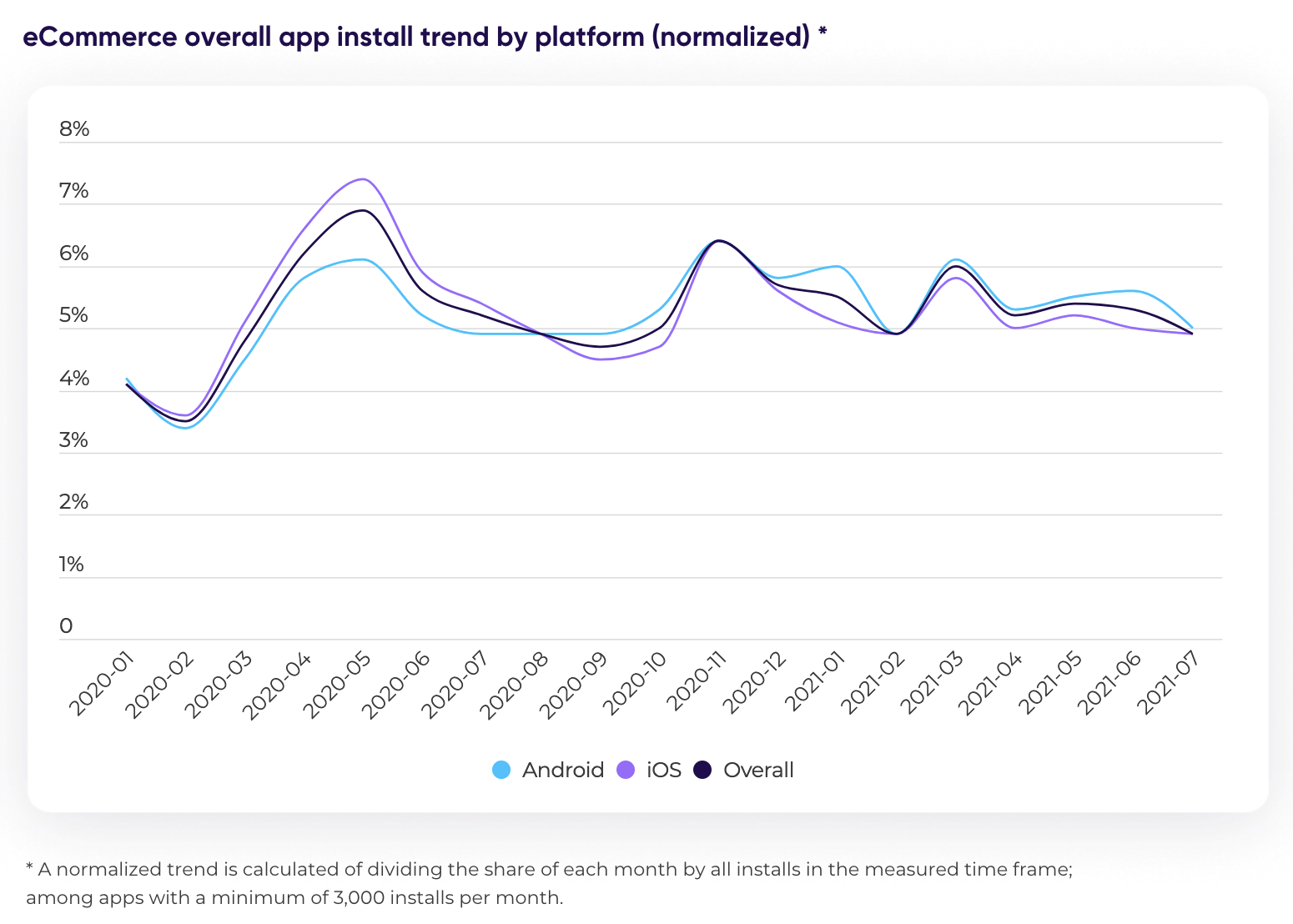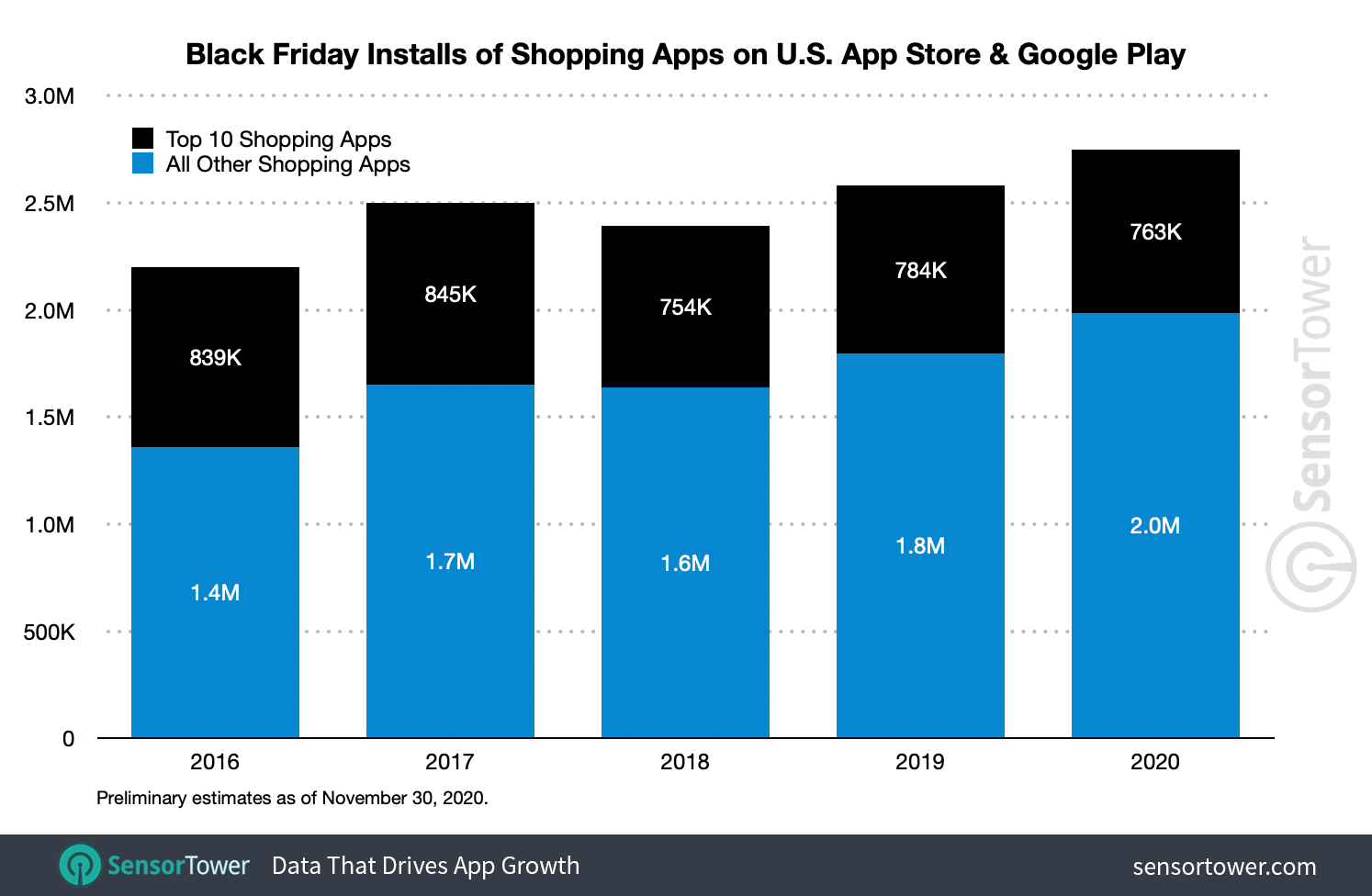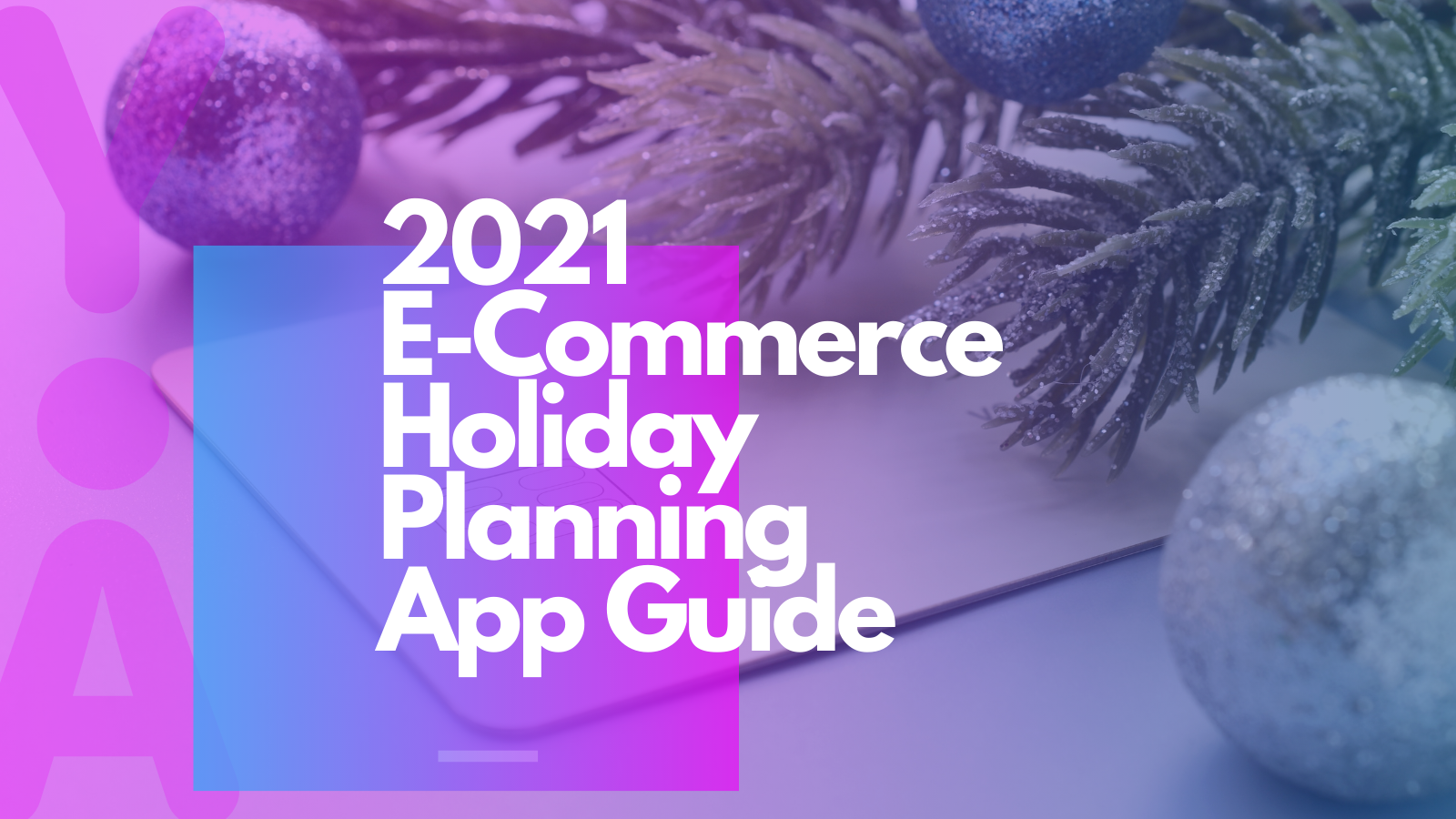The ecommerce industry has seen immense growth since the start of the pandemic. The main drivers of that growth are mobile apps. Not only is mobile commerce the fastest-growing ecommerce channel, it’s also a key driver of ecommerce revenue. The average value of an ecommerce transaction increases by 31% when users interact with a brand on both their website and mobile app.
In many ways, mobile shopping apps have become the connective tissue between brick-and-mortar and ecommerce shopping experiences. With the pandemic limiting in-person contact, mobile apps have filled the void, simplifying the shopping experience to incentivize purchases despite the effects on in-person shopping. Mobile apps are also driving growth among a new and emerging type of shopper; one who spends more time on mobile devices than ever before.
If you’re looking to grow your shopping app this holiday shopping season, look no further. Here is your comprehensive 2021 E-Commerce Holiday Planning mobile commerce guide to growth.
Mobile Commerce Since the Pandemic Started
Despite store closures with the start of the pandemic in Q2 2020, ecommerce app installs spiked 8% overall.

Source: AppsFlyer
This led to a record Black Friday at the end of 2020. On November 27, 2020, first-time installs of mobile shopping apps in the U.S. climbed 8% year-over-year to reach a new single day record of 2.8 million installs.

Source: Sensor Tower
Mobile commerce app install adoption remained consistent through 2021. The mobile-first innovation accelerated by the pandemic led to an overall 36% year-over-year install spike between pre-pandemic times and Q1 2021.
So far, installs in the e-commerce vertical have grown 10% in 2021 compared to 2020. Session times have also increased by 12% to an average 10.56 minutes.
This has further led to widespread predictions that the 2021 e-commerceholiday shopping season will break records set in 2020.
E-Commerce HolidayGrowth Predictions in 2021

Current predictions anticipate that 54% of total eCommerce sales will come from mobile commerce sales by the end of 2021. For comparison, in 2017, only 34.5% of total ecommerce sales came from mobile apps.
By the end of 2021, it’s predicted global mobile eCommerce sales will reach $3.56 trillion. For comparison, mobile commerce sales reached $1.4 trillion in 2017.
During the holiday season alone, mobile commerce is expected to increase by 18.8% to $97.15 billion. Most of that revenue is expected to come from mobile apps (as opposed to mobile web).
Opportunities for E-Commerce Holiday Planning

When it comes to navigating the highly competitive space of mobile retail, growth marketers should focus on current challenges, strategies and emerging channels.
Challenges
Customer Loyalty
Building a loyal and consistent customer base is an ongoing challenge for apps in all categories. The truth remains that 80% of your business’ profits come from repeat purchases from 20% of your customer base. That’s why implementing retargeting and re-engagement strategies that foster return customers as soon as you start growing your brand is critical.
Because mobile apps are ever-present brand logos on users’ smartphone homescreens, which are unlocked multiple times a day, growing your brand’s app is an effective strategy to increase customer loyalty. Getting your app downloaded to a user’s phone creates a constant reminder of your brand and keeps it top-of-mind when they’re ready to shop.
Abandoned Carts
Cart abandonment is another pressing issue for ecommerce retailers. Currently, the average cart abandonment rate for ecommerce brands is up to 79%.
According to surveys, customers abandon their shopping carts for reasons including having to set up an account and long-winded checkout processes. Focusing on your shopping app’s growth strategy can address these concerns by providing a more convenient experience to your customers.
In general, apps are known to provide the most convenient shopping experience; as they securely store users' info so they don’t have to re-enter information. Given this convenience, users with a high-intent-to-purchase overwhelmingly use apps. In fact, surveys have found that 57.5% of consumers think mobile apps are more convenient than other channels for shopping.
Strategies to Consider for E-Commerce Holiday Planning
Gamification
Gamification can address both previous challenges discussed — customer loyalty and cart abandonment. This is a marketing tactic that increases engagement by offering rewards that encourage user participation. Gamifying offers might include launching a scavenger hunt or trivia game.
A well-known example of a major brand using this strategy to increase downloads was Burger King’s 2019 “Whopper Detour” campaign. The campaign engaged new users by offering 1-cent Whoppers to people who downloaded the newly upgraded Burger King app within 600 feet of a McDonald's restaurant. The app then navigated users to the nearest Burger King to pick up their food within an hour. The campaign drove 1.5 million downloads of Burger King’s mobile app.
BOPIS (Buy Online Pickup In Store)
With people steering away from crowded shopping areas due to the pandemic, BOPIS (buy online pickup in store) strategies continue to gain traction. Mobile apps drive click-and-collect transactions which has made it one of the fastest-growing segments of ecommerce. In 2020, BOPIS increased 106.9%. It’s expected to grow another 15.2% in 2021. Along with providing a more convenient shopping experience to your users, BOPIS also creates touchpoints to interact with your customers regardless of how they shop, whether digitally or in-person.
Consider offering BOPIS transactions this year as a part of your holiday campaign planning! Offering this transaction method for purchases made exclusively on your mobile app could increase downloads and engagement.
Cross-channel marketing strategies
One of the most basic — and effective — strategies to increase brand awareness and repeat purchases is communicating with your user however they connect with your brand; whether that be via email, social media, web or in-store. With that said, building a cross-channel marketing strategy that highlights your brand’s benefits across mediums is critical. Related to this is creating a seamless shopping experience by using deep linking to smoothly transition users from any channel in your mix to the right destination within your app.
Promotions & Rewards
Help your customers see the value of engaging with your brand’s retail app by offering app-only discounts, promotions and rewards. This could include discounts on first orders, priority access to sales, and exclusive, app-only content like blogs or videos. As reflected by the projected growth of the global mobile coupon industry — which is expected to grow at a CAGR of 56.5% by 2025 — consumers are becoming more comfortable with mobile-specific rewards.
E-Commerce Holiday Planning: Channels
Social Commerce
Social commerce channels are an emerging source of purchases. TikTok (in partnership with Shopify), Instagram, SnapChat, and Twitter have all introduced shopping features that present products to users and create direct paths for them to make purchases.
Within the realm of social commerce, a major driver of growth is short form video. Maintaining its position as the most-downloaded app for over a year now, TikTok is the undisputed leader of this form of content. A recent survey found that 28% of users on TikTok had bought something advertised to them on the platform at least once. This combined with the fact that TikTok has 1 billion active users, makes TikTok an emerging new channel for growth.
Connected TV (CTV)
The connected TV advertising opportunity continues to grow year-over-year. CTV now accounts for 40% of all digital video impressions and approximately 113 million households will have CTV by 2024.
For ecommerce brands, CTV presents a huge opportunity. Roku and Shopify recently announced a partnership to provide a Roku app with CTV ad creation and campaign management to all Shopify merchants. Furthermore, YouTube has expanded their ad formats to include CTV-based campaigns. This will allow YouTube viewers to shop a brand’s website or app on their mobile device without interrupting their viewing session.
While CTV viewership is growing, growth marketers still face attribution challenges on this channel. The CTV opportunity will continue to grow as improvements are made in the attribution of ads shown on CTV devices — cross-device — to mobile app installs, impressions, and post-install events.
A Note on IDFA Opt-In
Currently the average IDFA opt-in rate as part of Apple’s iOS 14.5 data privacy changes for ecommerce apps is 17%. While this is much higher than mobile marketers expected when iOS 14.5 was first released, it could still be improved. To increase IDFA opt-in in the name of providing your customers with a more personalized shopping experience, developing a consent-based UX strategy via a pre-permission prompt is key.
E-Commerce Holiday Planning: Conclusion
Given the projected growth of the e-commece holiday shopping season, it’s a key opportunity for all shopping apps to increase their reach and engagement in the highly competitive ecommerce marketplace. The average ecommerce transaction value increases by 31% when users interact with a brand's website and mobile app. This highlights the importance of investing in your app this holiday season to enhance your brand’s bottom line.
To confront ongoing challenges related to brand loyalty and shopping cart abandonment, growth marketers should focus on high impact marketing tactics such as gamification, BOPIS transactions, app-only discounts and rewards, and cross channel marketing strategies. Emerging social commerce and CTV channels are areas where marketers can diversify and test their ad spend this holiday season. Finally, implement a consent-based UX strategy with a pre-permission prompt to enhance your ability to provide personalized experiences to iOS users.
Need Help Planning your 2021 E-Commerce Holiday Growth Strategy?

We’re here for you this season with e-commerce holiday planning! Reach out to us for support planning your ecommerce app’s mobile marketing strategy this holiday season for maximum growth!

